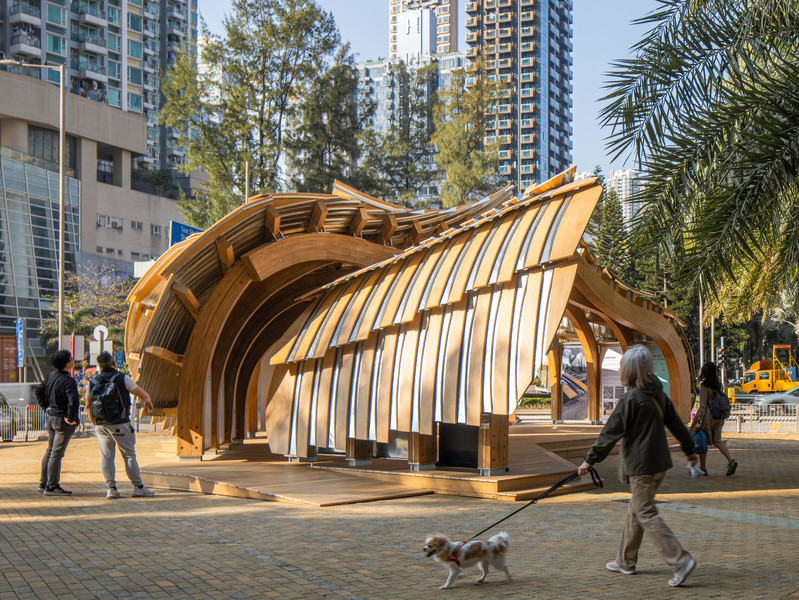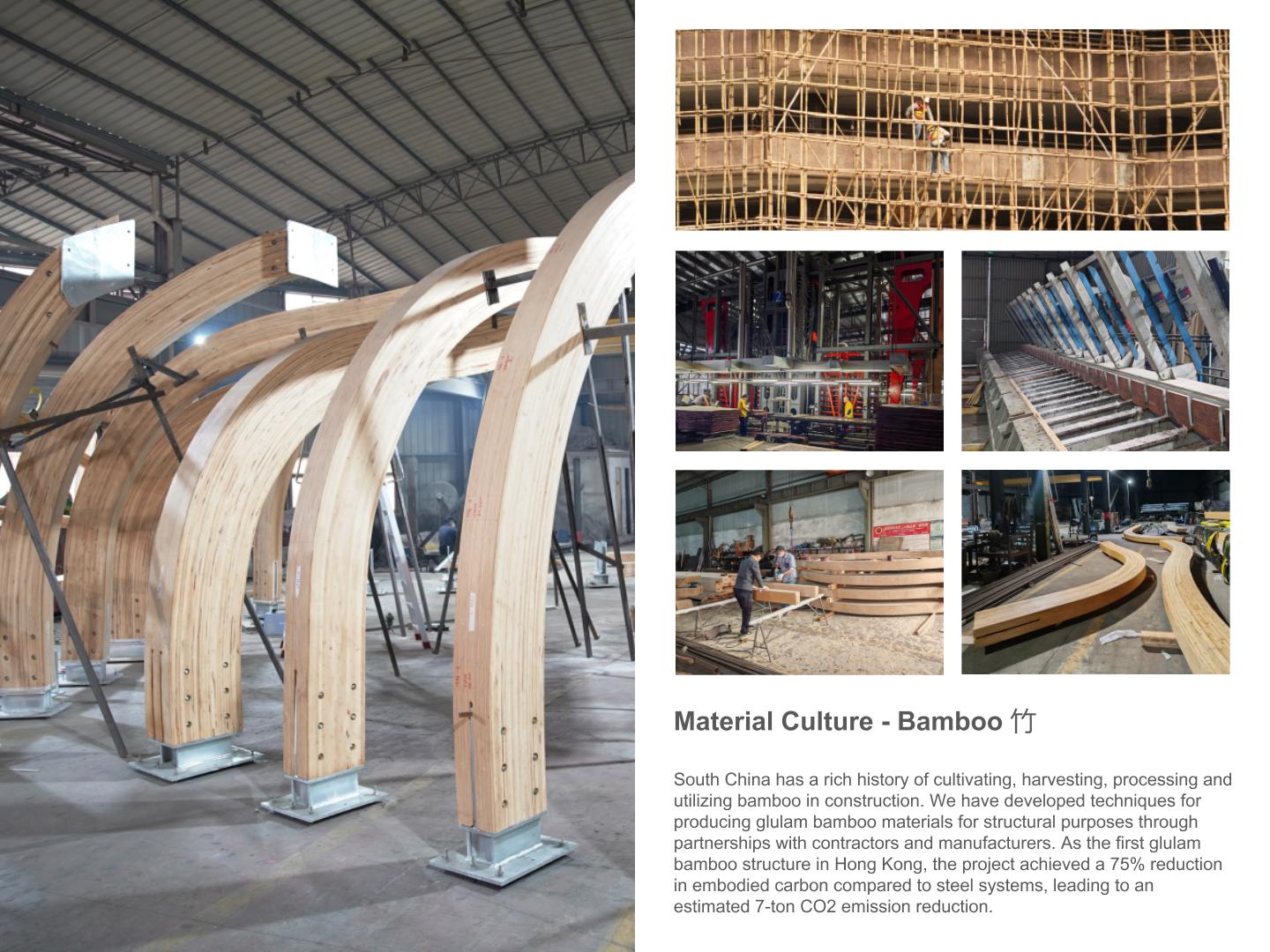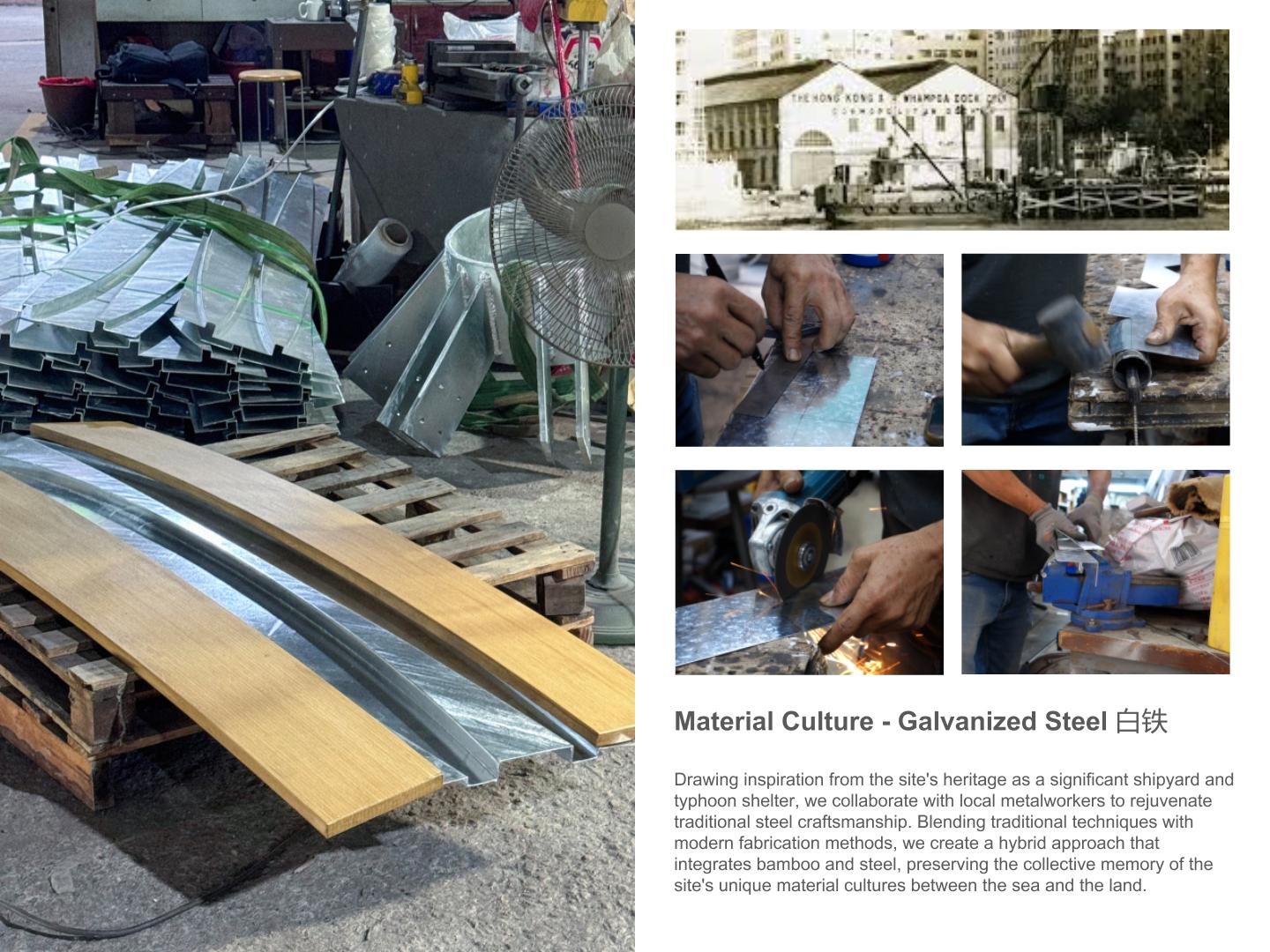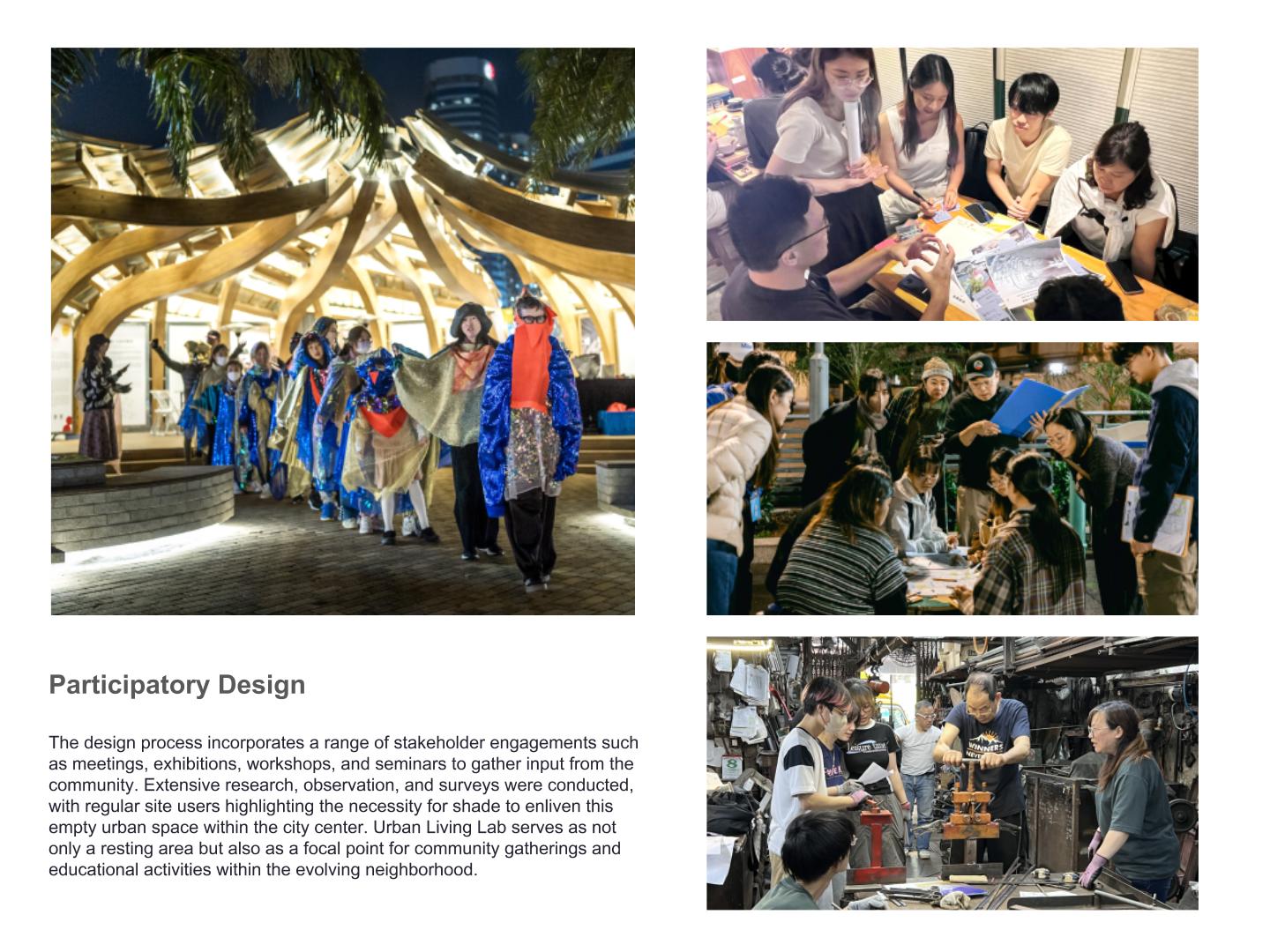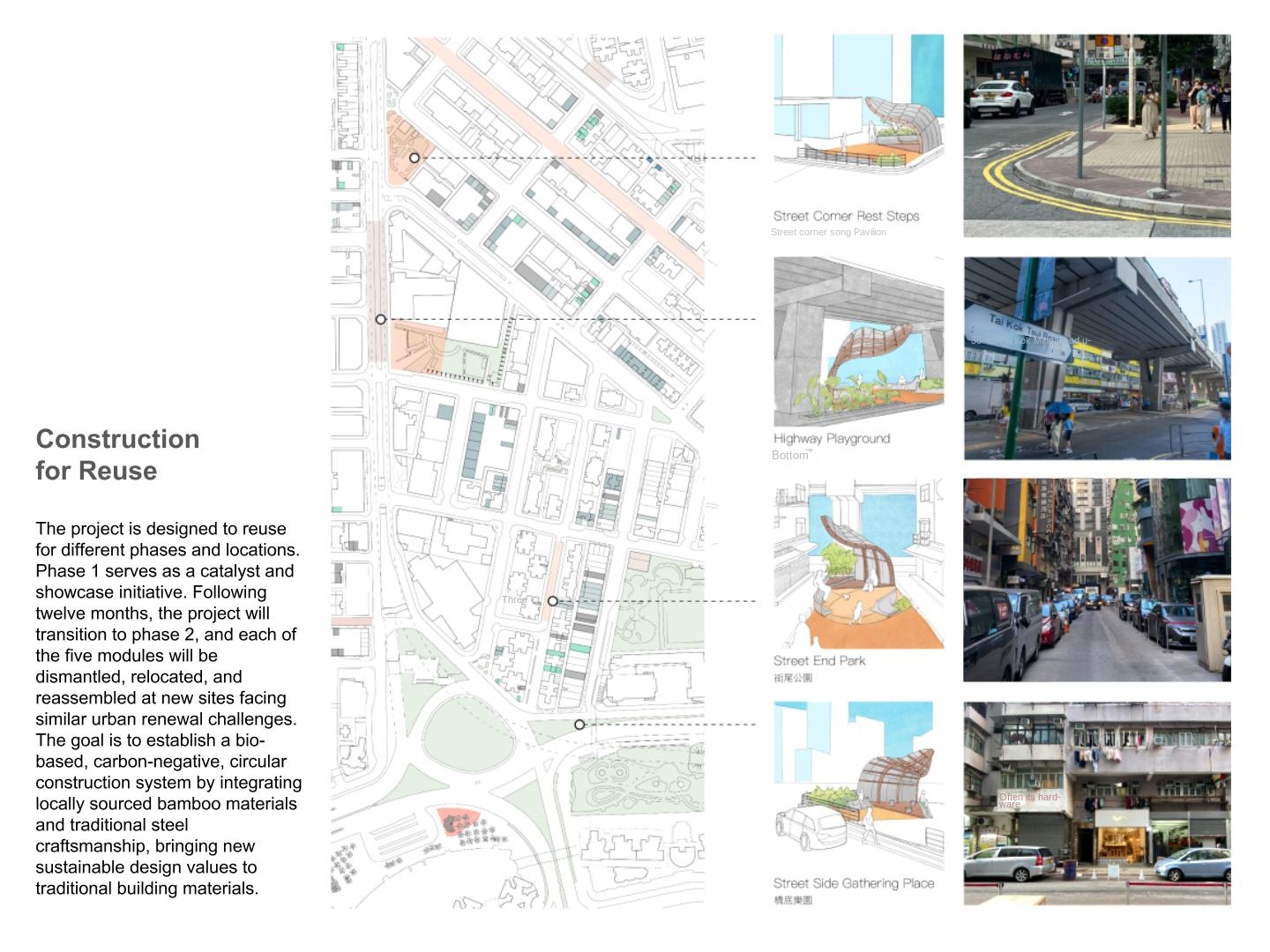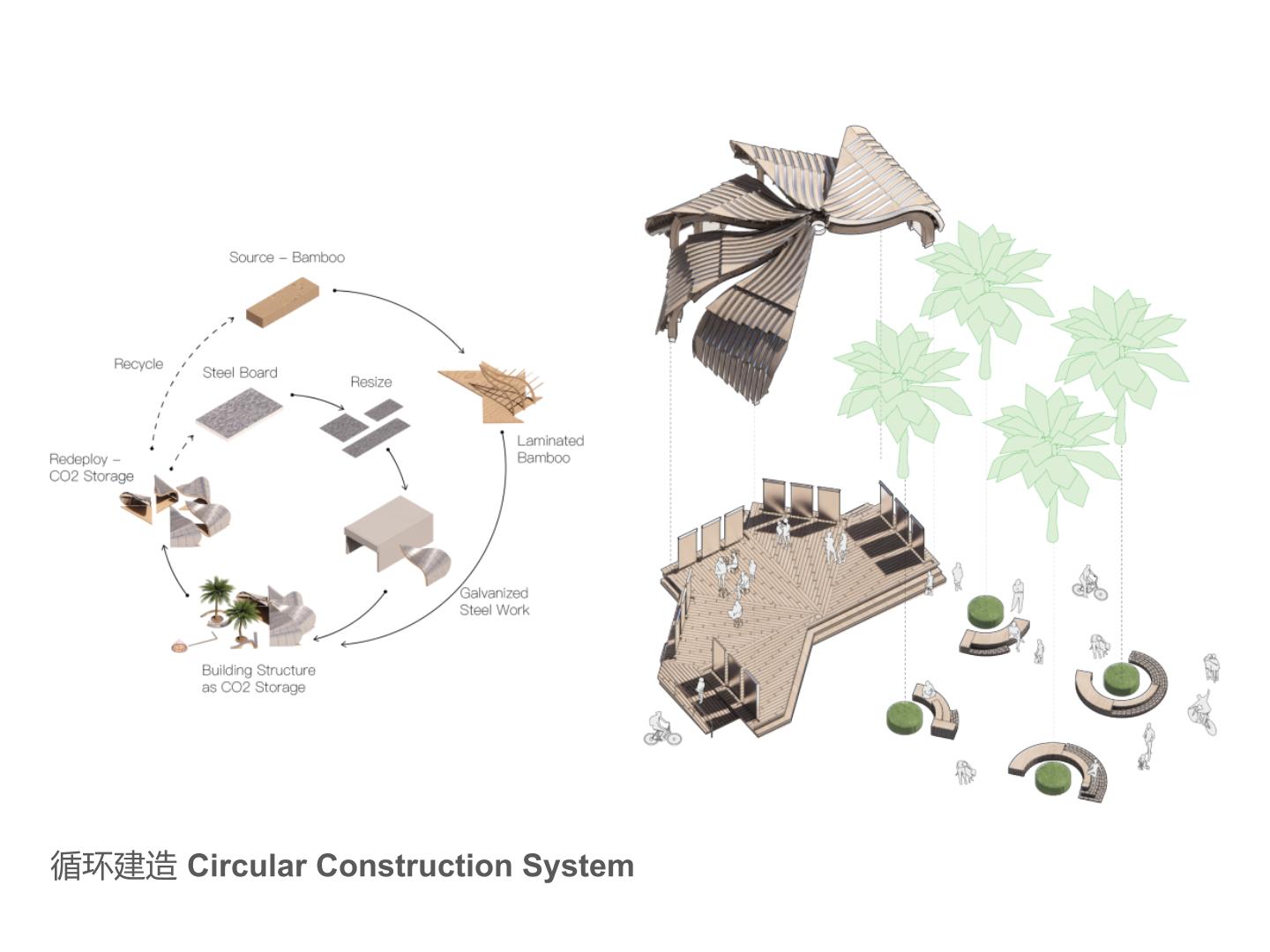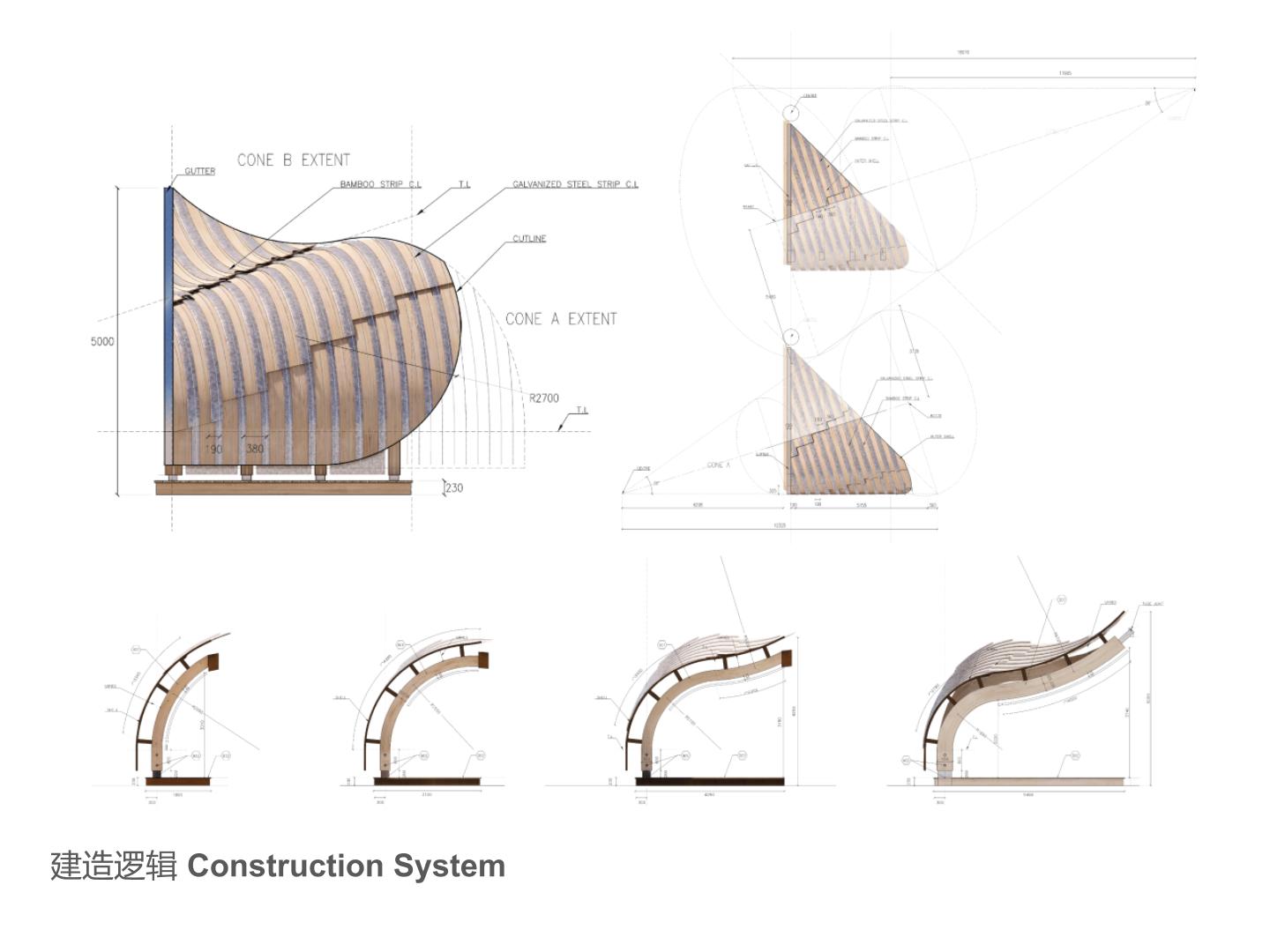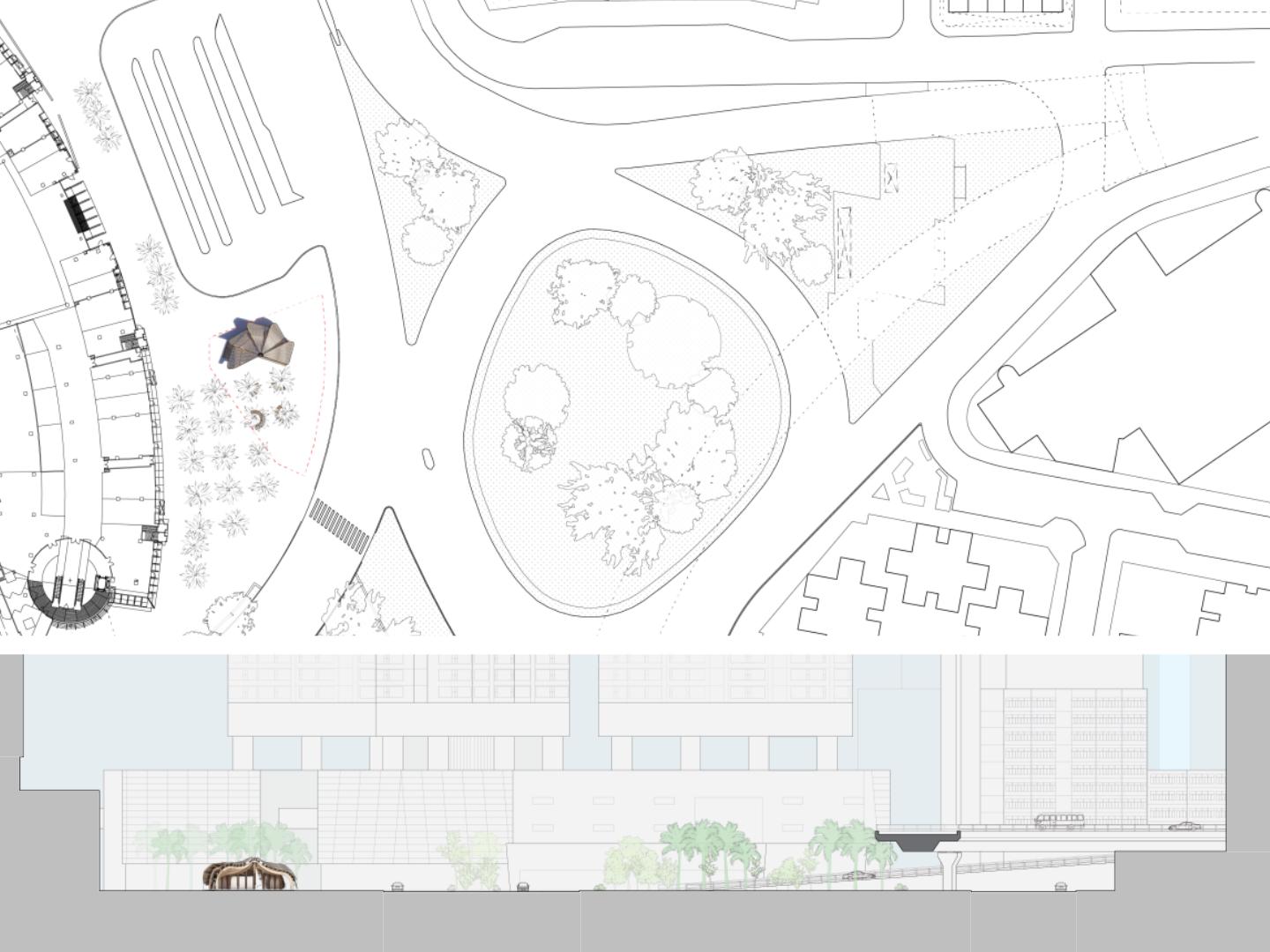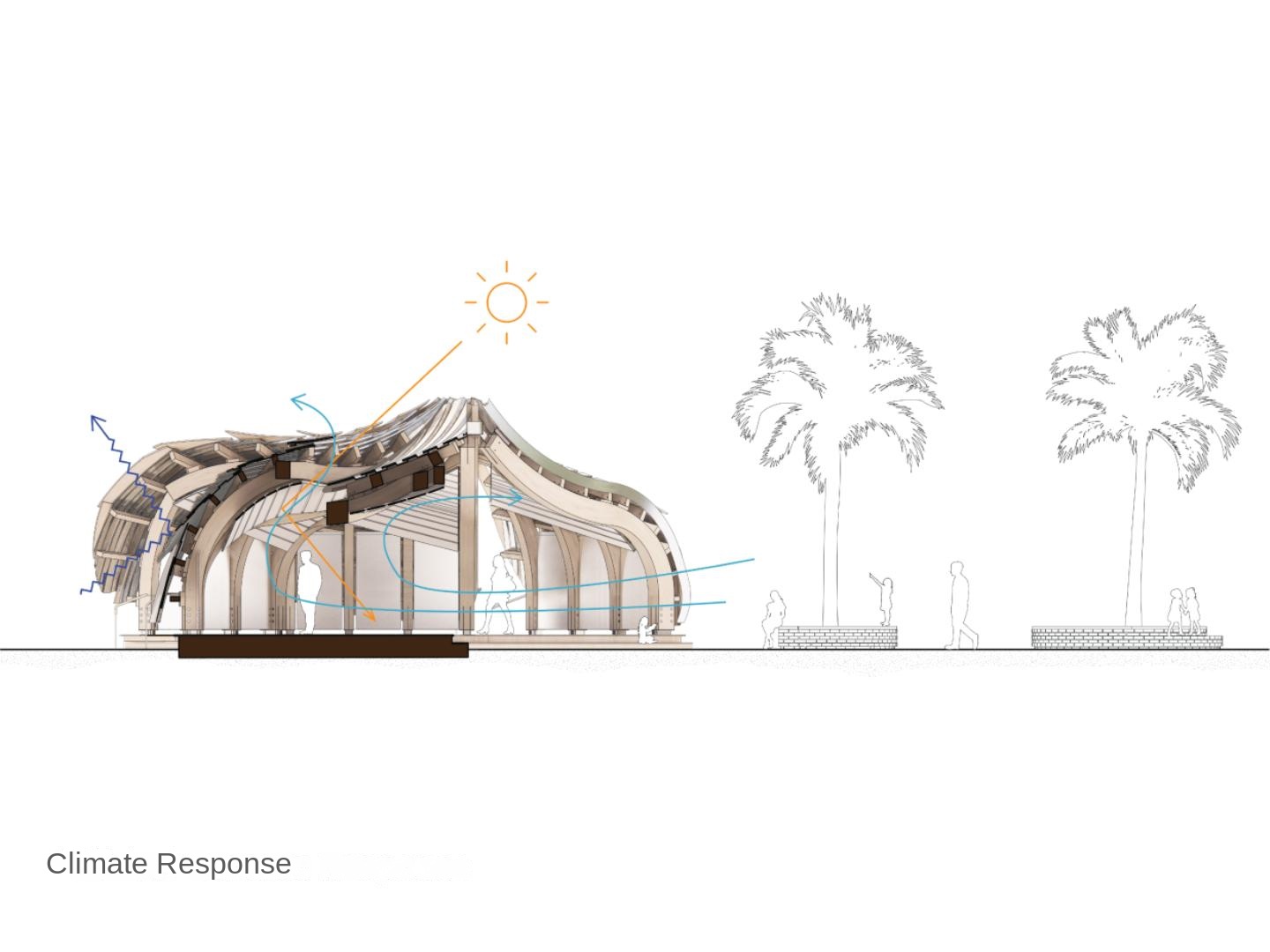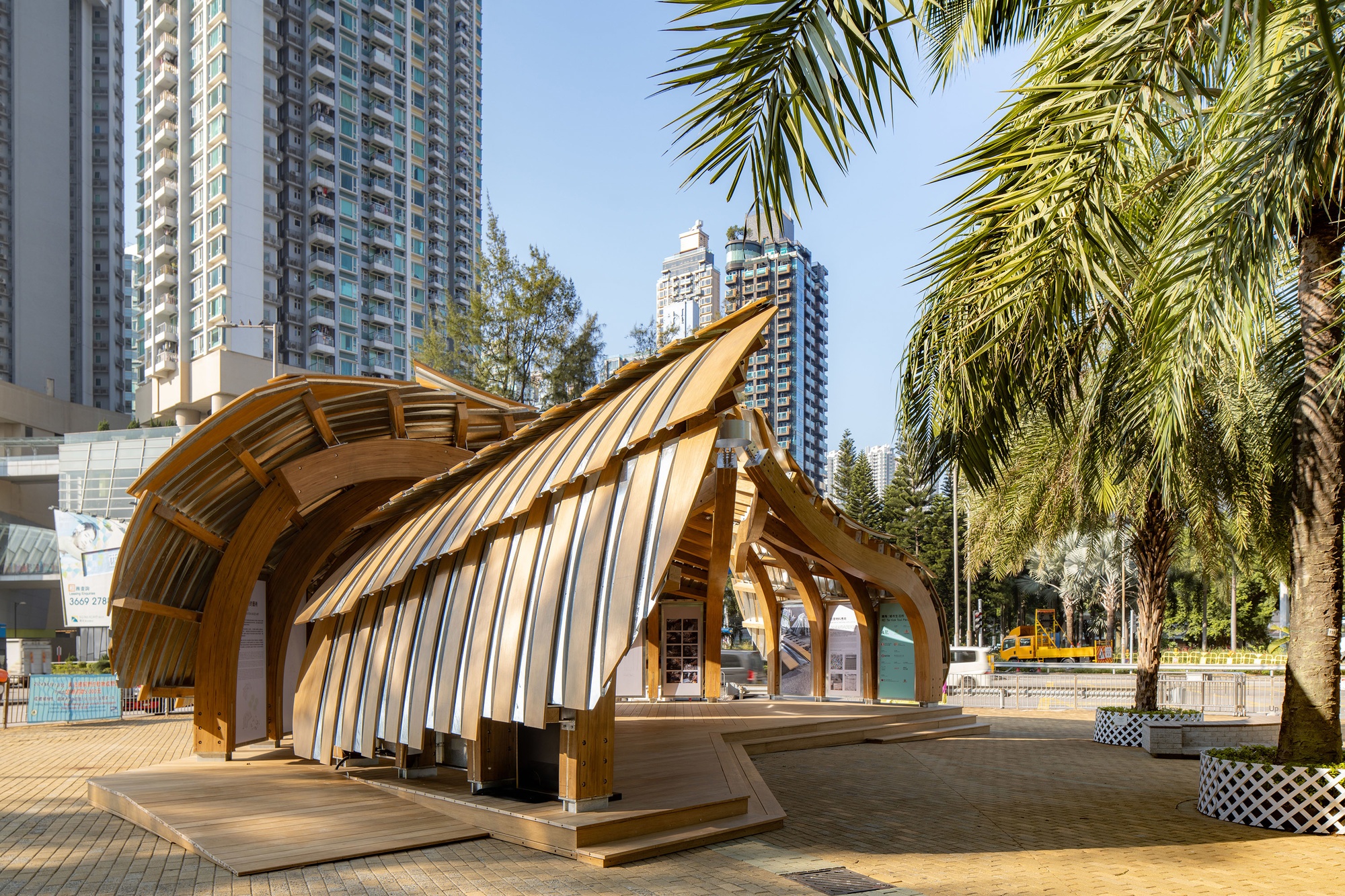
Urban Living Lab
A public parasol for Hong Kong's subtropical climate
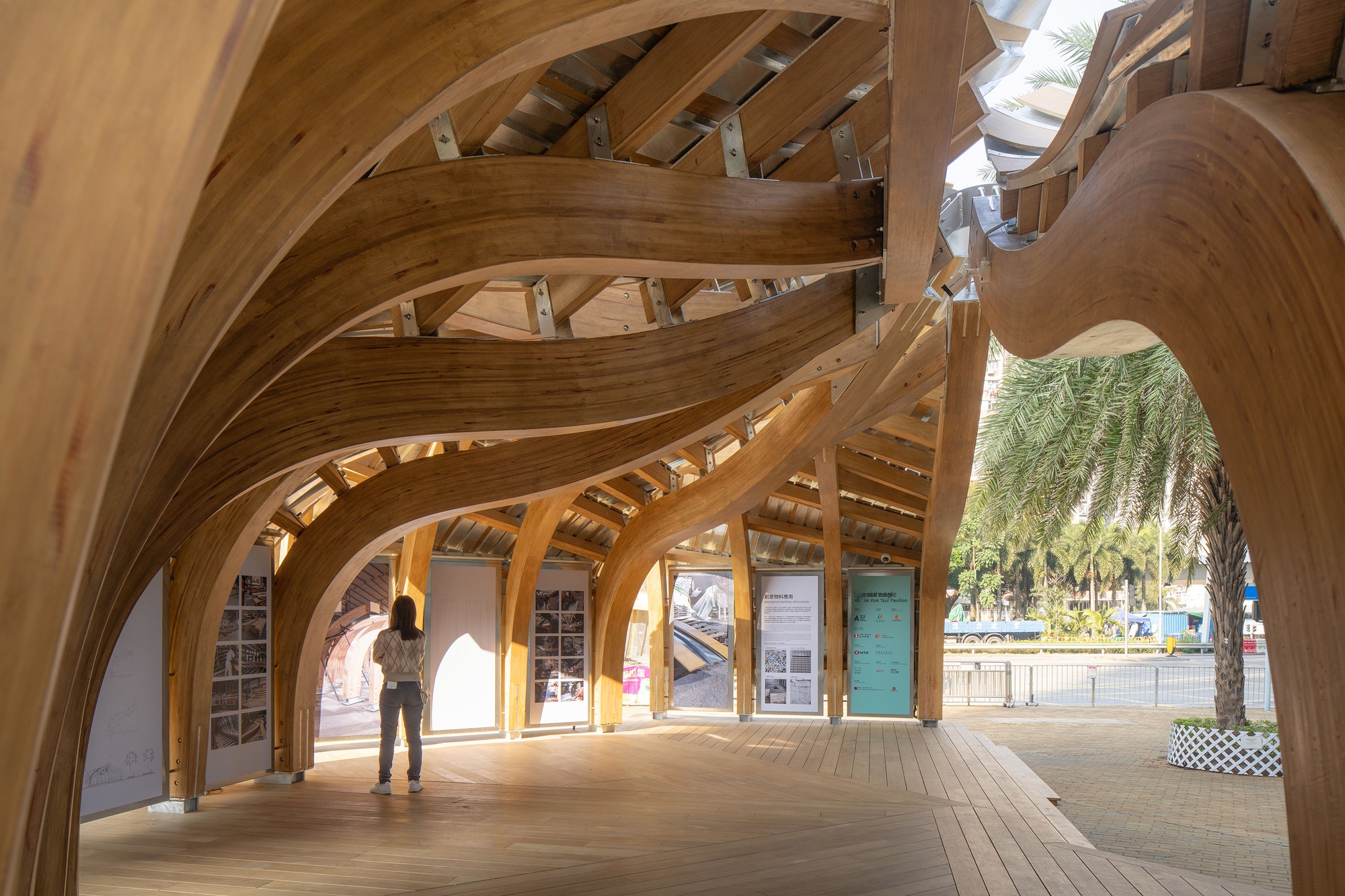
Urban Living Lab
A new use of bamboo for contemporary architecture in China
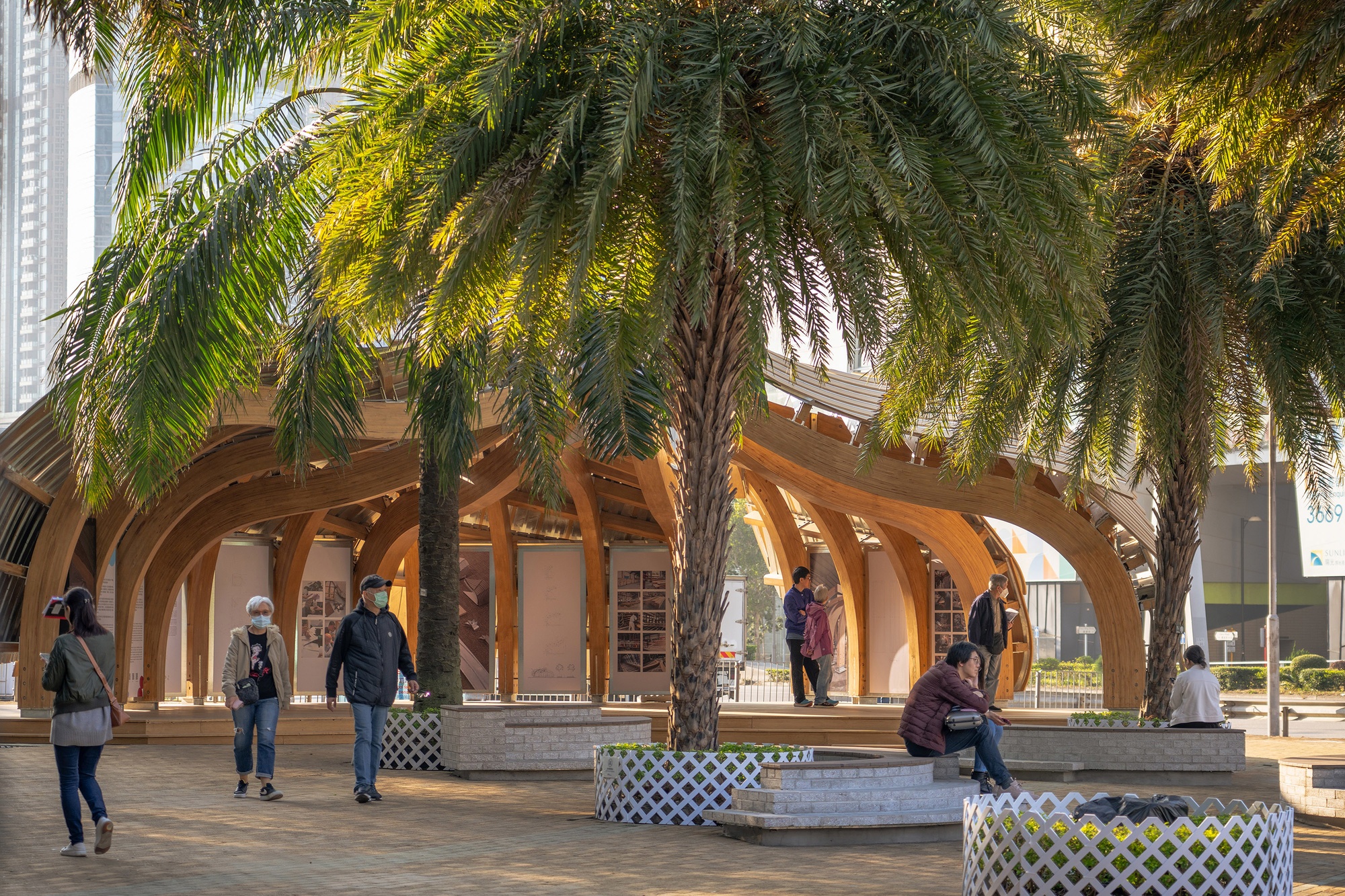
Urban Grove Forest Square
Public space for the community
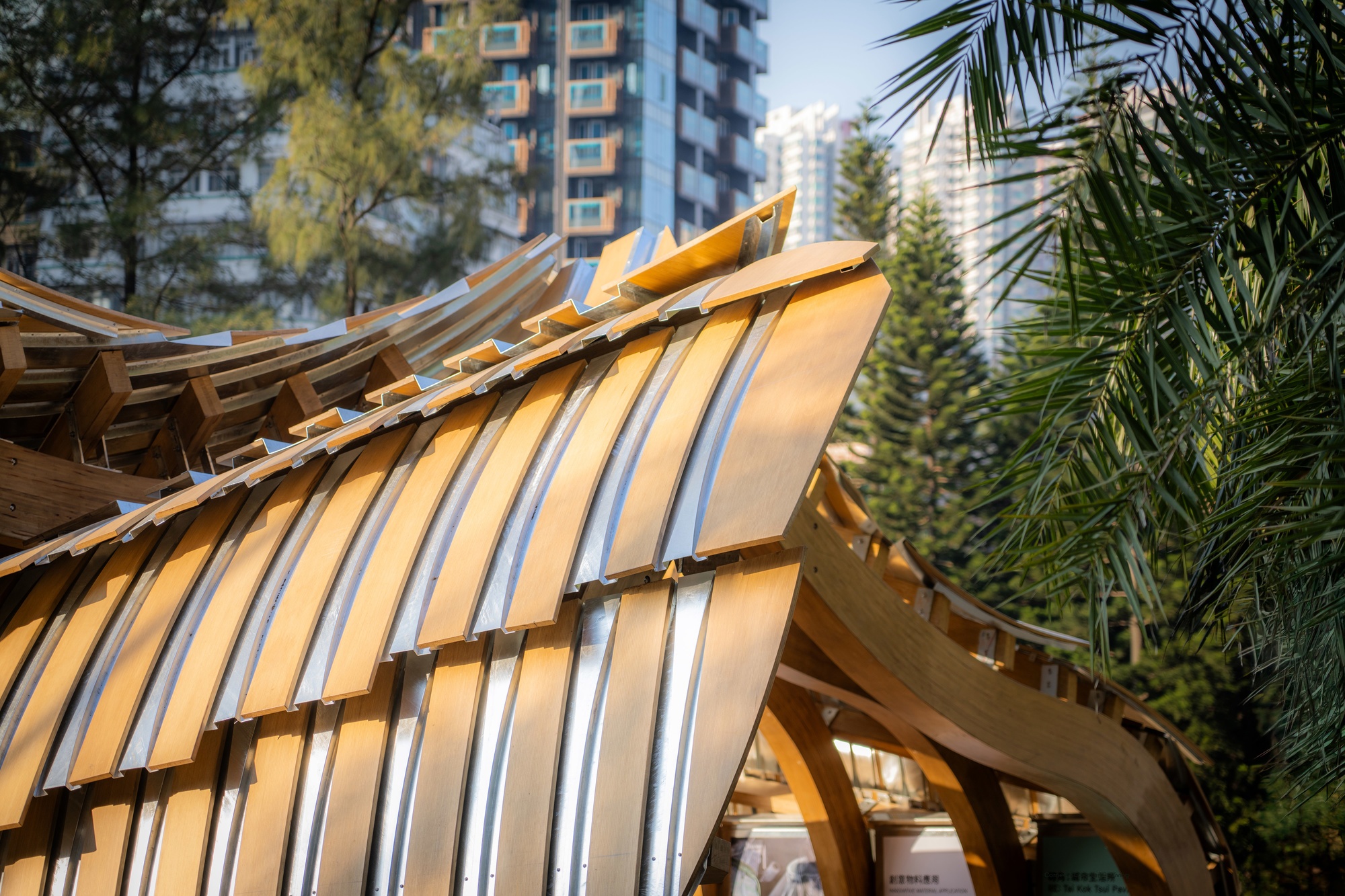
Material Tectonics material construction
Renovation traditional crafts: bamboo galvanized steel
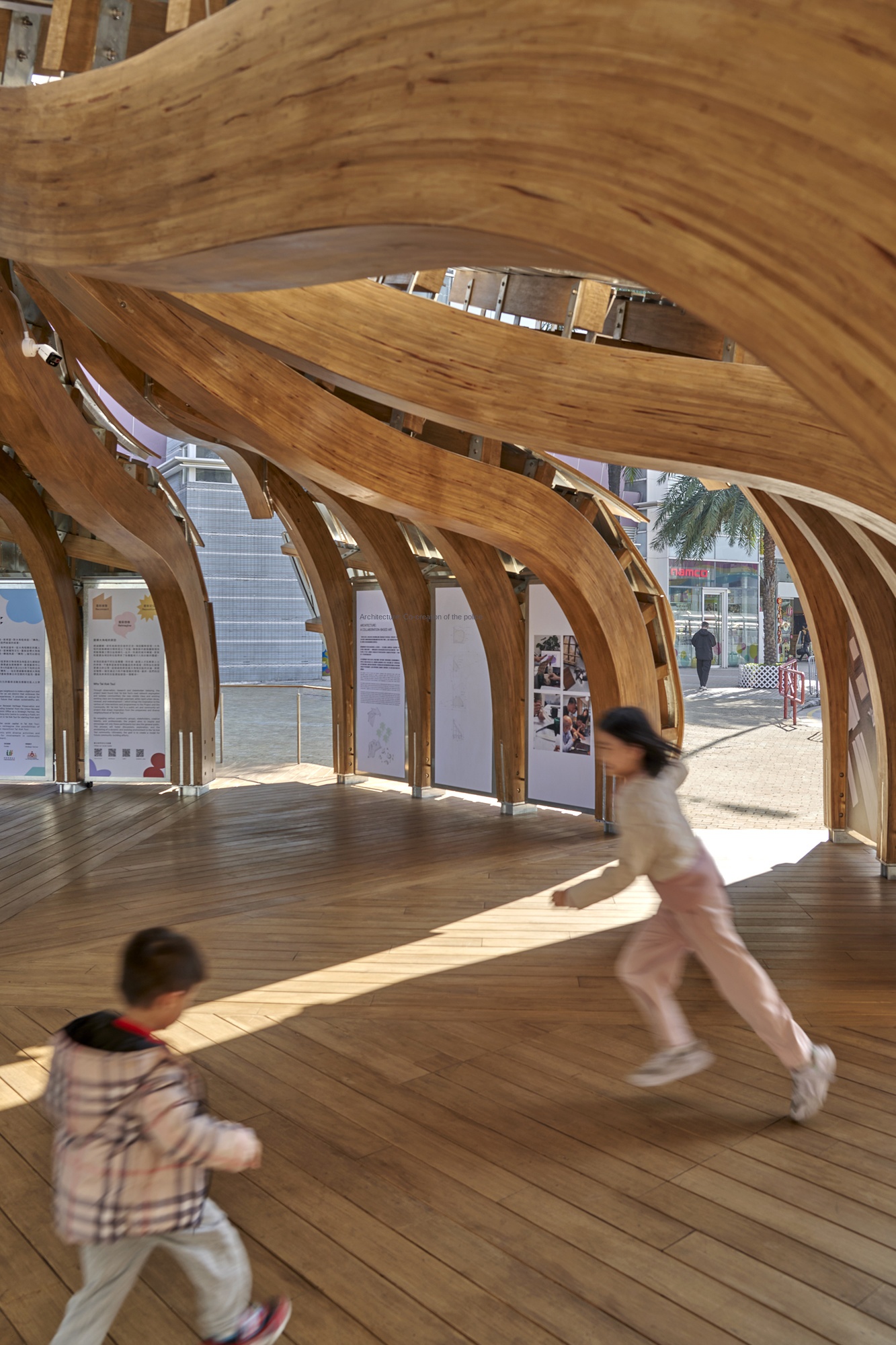
Generous Open Space
A place for communities to relax, gather, and play
Additional materials Additional Information
Our design approach that involves investigation of material culture, community engagement and sustainability.
Detailed Project Proposal Detailed Project Design
Drawings and details of our proposal, with consideration of modularity, climatic concern and construction circularity.
Urban Living Lab
Material culture and construction of the Urban Living Lab
Urban Living Lab is a public parasol that creates a respite from Hong Kong's subtropical climate, providing communities with a space to gather, socialize, and relish in the public environment. The architecture's geometry is strategically planned around existing palm trees to maximize shade and facilitate cooling breezes throughout the space.
Located in a densely populated neighborhood undergoing urban transformation, the project is prefabricated using five identical and demountable structural modules. The design integrates locally sourced bamboo materials and traditional steel craftsmanship for a bio-based, carbon-negative, circular construction system, bringing new sustainable design values to traditional building materials.
We bring innovation to traditional crafts and introduce new values to the material culture of bamboo and galvanized steel in South China. The region has a rich history of cultivating, harvesting, processing and utilizing bamboo in construction. We have developed techniques for producing glulam bamboo materials for structural purposes through partnerships with contractors and manufacturers. As the first glulam bamboo structure in Hong Kong, the project achieved a 75% reduction in embodied carbon compared to steel systems, leading to an estimated 7-ton CO2 emission reduction.
Drawing inspiration from the site's heritage as a significant shipyard and typhoon shelter, we collaborate with local metalworkers to rejuvenate traditional steel craftsmanship. Blending traditional techniques with modern fabrication methods, we create a hybrid approach that integrates bamboo and steel, preserving the collective memory of the site's unique material cultures between the sea and the land.
The work of Su Chang Design Research Office integrates traditional crafts and emerging technologies to innovate familiar-seeming elements through contemporary cultures.







